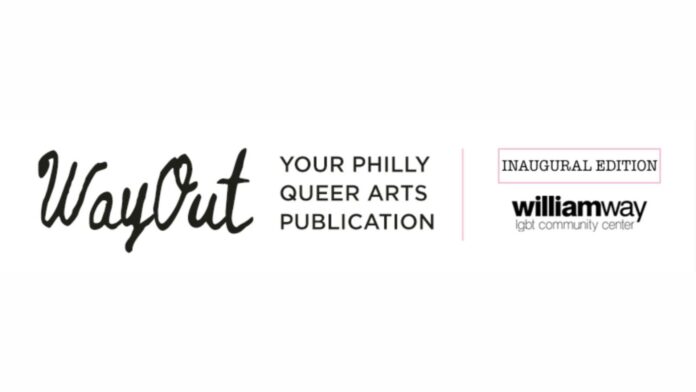
From its inception, a major part of the mission of the William Way LGBT Community Center has been an ongoing commitment to promoting LGBTQ+ art and artists. Now, members of the center’s Arts Committee have started a project that will expand and enhance that commitment.
Way Out is a new online queer arts publication that released its inaugural issue earlier in May. It is the brainchild of Arts Committee Chair Irving Chan Gomez and Exhibitions Coordinator Alissa Roach.
According to Gomez and Roach, the idea for Way Out had its genesis last year when the Center announced plans to shut down for an extended period for major renovations. William Way had a long history of partnership and collaboration with outside LGBTQ+ arts organizations which was to continue throughout its closure. The duo conceived of the publication as a means of informing and engaging the center’s membership with ongoing collaborative projects.
“We thought it would be a good way to feature artists and promote exhibitions while William Way was closed,” Gomez said.
When plans for William Way’s closure were postponed, they proceeded with plans to publish Way Out, which they hope to continue to publish on about a monthly basis.
Gomez describes Way Out as “more than a newsletter.” In fact, the inaugural issue contains two essays that are less factual and more interpretive and personal. The first piece, penned by Gomez, is an examination of the work of artist partners Chris Belton and Laura Hawley. The second piece, penned by arts committee member Juno Rosenhaus, looks at the current exhibition at Dykes+ ArtHaus called “Silver Legs, Uncrossed.”
Roach hopes that “Way Out will help continue building relationships with other queer art organizations.”
As an example, Roach points out that the next issue, scheduled for release in June, will showcase a piece on the Pride exhibition at the No Name Gallery in Germantown called “Tactile Assembly.”
For the time being, contributors will be drawn from William Way’s arts committee volunteers but in the future, they hope to encourage engagement from the wider center membership and artists from the community.
Gomez describes the question facing those who seek to promote queer art and artists. “How do we create community with the artists? That’s what we’re striving for. We really want [Way Out] to be something for the artists.”
Roach echoes her colleague’s sentiments.
“We’re really hoping for this to be a resource for queer creative people,” Roach said. “The goal is to build community through these exhibitions.”
The inaugural issue for Way Out is now available at https://bit.ly/4bVXrY4. Readers can subscribe for future editions by visiting https://mailchi.mp/waygay/arts-newsletter.
